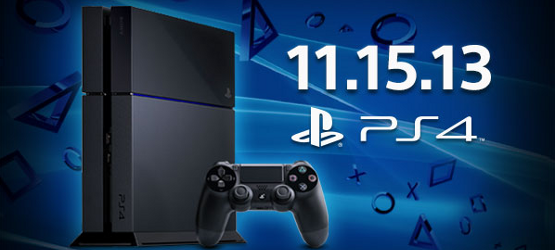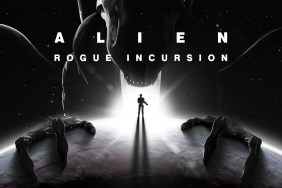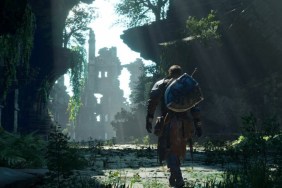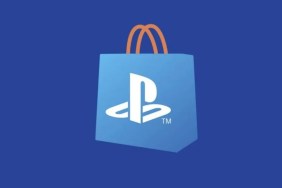It feels like only yesterday when the PS4 was officially announced live on stage at the Manhattan Center in NYC during PlayStation Meeting 2013. Since then it’s been quite a rollercoaster of PR, news, events, videos, and more. Now, after nine months of waiting patiently, we have a PS4 in our hands, and soon, you will too.
After carefully opening the alarmingly thin PS4 retail box, the first thing you’ll notice is just how gorgeous it looks—it’s a technophile’s dream. The angular design allows for crisp edges, and a look that screams “future”. The PS4 has a flat top and two-tone case with the larger meat of the body being matte, and the left side with the PS4 logo is a glossy, fingerprint-magnet. On the face of the PS4 where the two finishes meet are the on and eject buttons. The angled slope on the front conveniently provides more room to access both of these buttons. The USB ports are also located on the front for easy access, but are recessed as to not be an eye-sore. In this same recessed area is also where you’ll find the disc slot.

On top, the two finishes are divided by the PS4’s iconic LED light. You may have seen it in pictures as a blue light, but it also glows white during startup, and flickers to give a sensation as if it is breathing and coming alive. The LED glows orange while the PS4 is in standby mode, or red if a problem has occurred—we haven’t seen this, nor do we ever want to. Where the front of the unit allows for convenience in button-pushing, the same slope on the rear of the machine was designed to tuck the plug-ends of cords out of the line of sight to attribute to an overall cleaner appearance to the console.
The PS4 is rather light and thin, and about the same overall width and length as the PS3 Slim’s body size, but thinner due to not having that signature PS3 curve (curves are so last-gen). It’s whisper quiet, too, despite packing in so much power into a svelte structure. Inside the plastic is where the magic happens, with 8GB of GDDR5 RAM (16x more powerful than the PS3), a Blu-ray drive, 500GB HDD, and a semi-custom AMD-powered x86 CPU, all coming together to give developers the tools they need to create new experiences and new worlds.
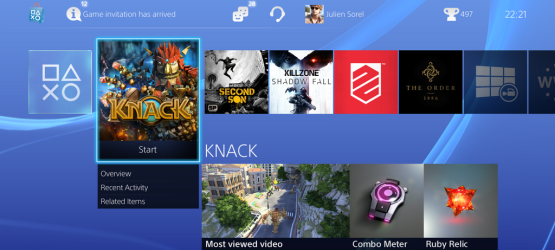
After starting up the console and beholding that blue light for the first time in person, the swirling blue background of the PlayStation Dynamic Menu will catch your attention (that’s the new name for the PS4 UI). The XMB is gone, and in its place is a more simplified, personalized, and social experience. It’s also well-designed to expose you to and sell you more PlayStation products—a smart move by Sony. The What’s New section will let you know of new promotion, and keep you abreast of your friends actions, be it live-broadcasting gameplay via Twitch, or playing a new game. Right on the main part of the menu also lists your games, a web-browser, a tab for Blu-ray movies and video-applications (13 apps due at launch such as Netflix or Amazon Instant Video), and PlayStation Live which shows a number of games being publicly broadcasted.
PlayStation Live and your friend feed is a great way to get more information about a game. Let’s say you tune into your friend’s livestream of Killzone: Shadow Fall. A box will appear that will provide more information, allow you to purchase it, or view it in the PlayStation Store to see things like DLC and more. And each individual game has its own tab like this, where you can view DLC, or even hope directly into the game’s multiplayer, completely bypassing the single-player and main menus. Up to 2,000 PSN friends can be added, so there can be a lot to take in at once, but it opens up a world of PlayStation to all.
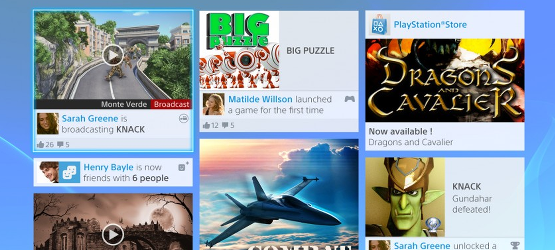
The PlayStation Store is now native to the PS4 UI, making for nearly instant loading and access—fixing what I feel to be the PS3’s biggest flaw (no one wants to wait to spend their money, and Sony shouldn’t make anyone wait). It looks and acts very much like the PlayStation Store revamp that launched last year on the PS3, but has expanded game menus. Purchasing and pre-purchasing games installs them in the background, and depending on if it was developed to do so, you can begin to play immediately. You can even choose which section of the game you want to download first to start playing—single-player or multiplayer. Movies are no longer downloadable to store on your HDD for later watching, but still can be streamed. This is something that hasn’t been talked about much, and unless your internet is fast enough, this may be a problem for some.
Another menu option is there for The Playroom, which is essentially a tech demo to show off how accurate the combination of the DualShock 4 and PlayStation Camera combination can be. It’s fun enough to mess around with at launch, but after that it’s bound to become a wasted space on the PlayStation Dynamic Menu (unless Sony plans on keeping it updated and expanding).
Next Page: More on UI, DualShock 4, Share Button, Camera, Conclusion>>
